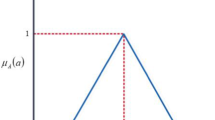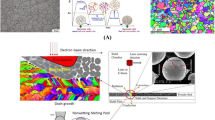Abstract
It is challenging to predict the residual deformation in the part-scale by performing detailed process simulation for the large part. In this work, the modified inherent strain theory is proposed to enable efficient yet accurate prediction of the residual deformation of large components produced by the Direct Metal Laser Sintering process. The proposed theory allows for the calculation of inherent strain accurately based on a small-scale process simulation of a small representative volume. The extracted mean inherent strain vector will be applied to a part-scale model layer-by-layer in order to simulate accumulation of the residual deformation by static finite element analysis. To verify the accuracy of the proposed method, the residual deformation of the double cantilever beam and the complex canonical part after the DMLS process is investigated, and the predicted residual deformation matches well with the experimental results for both large parts while the computational efficiency is also shown.









Similar content being viewed by others
References
Niebling F, Otto A, Geiger M (2002) Analyzing the DMLS-process by a macroscopic FE-model. In: Proceedings of 13th solid freeform fabrication symposium, pp 5–7
Nandy J, Sarangi H, Sahoo S (2017) Modeling of microstructure evolution in direct metal laser sintering: a phase field approach. In: IOP conference series: materials science and engineering, vol 1. IOP Publishing, p 012028
Zhang Y, Zhang J (2017) Finite element simulation and experimental validation of distortion and cracking failure phenomena in direct metal laser sintering fabricated component. Addit Manuf 16:49–57
Mercelis P, Kruth J-P (2006) Residual stresses in selective laser sintering and selective laser melting. Rapid Prototyp J 12(5):254–265
Fu C, Guo Y (2014) Three-dimensional temperature gradient mechanism in selective laser melting of Ti-6Al-4V. J Manuf Sci Eng 136(6):061004
Li Z, Zhang DZ, Dong P, Kucukkoc I (2017) A lightweight and support-free design method for selective laser melting. Int J Adv Manuf Technol 90(9–12):2943–2953
Gong X, Anderson T, Chou K (2012) Review on powder-based electron beam additive manufacturing technology. In: ASME/ISCIE international symposium on flexible automation. American Society of Mechanical Engineers, pp 507–515
Sahoo S, Chou K (2016) Phase-field simulation of microstructure evolution of Ti–6Al–4V in electron beam additive manufacturing process. Addit Manuf 9:14–24
Yan W, Smith J, Ge W, Lin F, Liu WK (2015) Multiscale modeling of electron beam and substrate interaction: a new heat source model. Comput Mech 56(2):265–276
Yan W, Lin S, Kafka OL, Lian Y, Yu C, Liu Z, Yan J, Wolff S, Wu H, Ndip-Agbor E (2018) Data-driven multi-scale multi-physics models to derive process–structure–property relationships for additive manufacturing. Comput Mech 61(5):521–541
Ye R, Smugeresky JE, Zheng B, Zhou Y, Lavernia EJ (2006) Numerical modeling of the thermal behavior during the LENS® process. Mater Sci Eng A 428(1):47–53
Huang SH, Liu P, Mokasdar A, Hou L (2013) Additive manufacturing and its societal impact: a literature review. Int J Adv Manuf Technol 67(5–8):1191–1203
Yang Q, Zhang P, Cheng L, Min Z, Chyu M, To AC (2016) Finite element modeling and validation of thermomechanical behavior of Ti–6Al–4V in directed energy deposition additive manufacturing. Addit Manuf 12:169–177
Denlinger ER, Heigel JC, Michaleris P, Palmer T (2015) Effect of inter-layer dwell time on distortion and residual stress in additive manufacturing of titanium and nickel alloys. J Mater Process Technol 215:123–131
Mukherjee T, Zhang W, DebRoy T (2017) An improved prediction of residual stresses and distortion in additive manufacturing. Comput Mater Sci 126:360–372
Hussein A, Hao L, Yan C, Everson R (2013) Finite element simulation of the temperature and stress fields in single layers built without-support in selective laser melting. Mater Des 1980–2015(52):638–647
Goldak J, Chakravarti A, Bibby M (1984) A new finite element model for welding heat sources. Metall Trans B 15(2):299–305
Lundbäck A, Lindgren L-E (2011) Modelling of metal deposition. Finite Elem Anal Des 47(10):1169–1177
Fallah V, Alimardani M, Corbin SF, Khajepour A (2011) Temporal development of melt-pool morphology and clad geometry in laser powder deposition. Comput Mater Sci 50(7):2124–2134
Li C, Liu J, Guo Y (2016) Efficient multiscale prediction of cantilever distortion by selective laser melting. In: Annual international solid freeform fabrication symposium
Li C, Fu C, Guo Y, Fang F (2016) A multiscale modeling approach for fast prediction of part distortion in selective laser melting. J Mater Process Technol 229:703–712
Ueda Y, Fukuda K, Tanigawa M (1979) New measuring method of three dimensional residual stresses based on theory of inherent strain (welding mechanics, strength & design). Trans JWRI 8(2):249–256
Yuan M, Ueda Y (1996) Prediction of residual stresses in welded T-and I-joints using inherent strains. J Eng Mater Technol 118(2):229–234
Deng D, Murakawa H, Liang W (2007) Numerical simulation of welding distortion in large structures. Comput Methods Appl Mech Eng 196(45):4613–4627
Michaleris P, Zhang L, Bhide S, Marugabandhu P (2006) Evaluation of 2D, 3D and applied plastic strain methods for predicting buckling welding distortion and residual stress. Sci Technol Weld Join 11(6):707–716
Zhang L, Michaleris P, Marugabandhu P (2007) Evaluation of applied plastic strain methods for welding distortion prediction. J Manuf Sci Eng 129(6):1000–1010
Keller N, Ploshikhin V (2014) New method for fast predictions of residual stress and distortion of AM parts. In: Proceedings of solid freeform fabrication (SFF) conference
Alvarez P, Ecenarro J, Setien I, San Sebastian M, Echeverria A, Eciolaza L (2016) Computationally efficient distortion prediction in powder bed fusion additive manufacturing. Int J Eng Res Sci 2(10):39–46
Setien I, Chiumenti M, van der Veen S, San Sebastian M, Garciandía F, Echeverría A (2018) Empirical methodology to determine inherent strains in additive manufacturing. Comput Math Appl. https://doi.org/10.1016/j.camwa.2018.05.015
Liang X, Cheng L, Chen Q, Yang Q, To AC (2018) A modified method for estimating inherent strains from detailed process simulation for fast residual distortion prediction of single-walled structures fabricated by directed energy deposition. Addit Manuf 23:471–486
Denlinger ER, Heigel JC, Michaleris P (2015) Residual stress and distortion modeling of electron beam direct manufacturing Ti–6Al–4V. Proc Inst Mech Eng Part B J Eng Manuf 229(10):1803–1813
Denlinger ER, Michaleris P (2016) Effect of stress relaxation on distortion in additive manufacturing process modeling. Addit Manuf 12:51–59
Cheng B, Shrestha S, Chou K (2016) Stress and deformation evaluations of scanning strategy effect in selective laser melting. Addit Manuf 12:240–251
Heigel J, Michaleris P, Reutzel E (2015) Thermo-mechanical model development and validation of directed energy deposition additive manufacturing of Ti–6Al–4V. Addit Manuf 5:9–19
Denlinger ER, Irwin J, Michaleris P (2014) Thermomechanical modeling of additive manufacturing large parts. J Manuf Sci Eng 136(6):061007
Peng H, Ghasri-Khouzani M, Gong S, Attardo R, Ostiguy P, Rogge RB, Gatrell BA, Budzinski J, Tomonto C, Neidig J (2018) Fast prediction of thermal distortion in metal powder bed fusion additive manufacturing: part 2, a quasi-static thermo-mechanical model. Addit Manuf 22:869–882
Acknowledgements
Financial support provided by the Army SBIR program for this research work is gratefully acknowledged.
Author information
Authors and Affiliations
Corresponding author
Ethics declarations
Conflict of interest
The authors declare that they have no conflict of interest.
Additional information
Publisher's Note
Springer Nature remains neutral with regard to jurisdictional claims in published maps and institutional affiliations.
Rights and permissions
About this article
Cite this article
Liang, X., Chen, Q., Cheng, L. et al. Modified inherent strain method for efficient prediction of residual deformation in direct metal laser sintered components. Comput Mech 64, 1719–1733 (2019). https://doi.org/10.1007/s00466-019-01748-6
Received:
Accepted:
Published:
Issue Date:
DOI: https://doi.org/10.1007/s00466-019-01748-6




